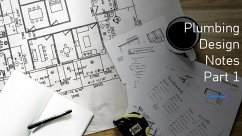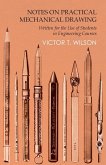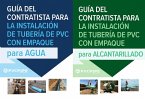This course offers engineers, designers, and students with practical guidance on plumbing system design. The notes summarize key requirements from the International Plumbing Code (IPC). highlight common industry practices, and explain design considerations for fixtures, piping, hot water systems, and pressure requirements.
Learning Objectives
1. Identify applicable plumbing codes and state amendments relevant to design projects.
2. Apply IPC tables to calculate fixture units, flow rates, and pipe sizes.
3. Recognize common fixture supply sizes, installation heights, and distribution strategies.
4. Explain the role and placement of backflow preventers, water meters, and zone valves.
5. Evaluate pressure requirements, friction losses, and pump sizing criteria.
6. Describe hot water supply strategies, including mixing valves and recirculation systems.
7. Apply drafting conventions for plumbing layouts and fixture connections.
8. Understand practical considerations for domestic plumbing such as insulation and routing.
PDH Eligibility
To request a PDH certificate, don't hesitate to reach out to author with solved quiz.
Disclaimer
The author and publisher of this book have made effort for the accuracy of the information contained herein. However, this book is shared for informational purposes only and is not intended as professional, legal, medical, or financial advice. The reader is responsible for their own actions and decisions. The author shall not be held liable or responsible for any loss, damage, or injury caused, or alleged to be caused, directly or indirectly, by the information contained in this book.
Dieser Download kann aus rechtlichen Gründen nur mit Rechnungsadresse in A, B, CY, CZ, D, DK, EW, E, FIN, F, GR, H, IRL, I, LT, L, LR, M, NL, PL, P, R, S, SLO, SK ausgeliefert werden.









